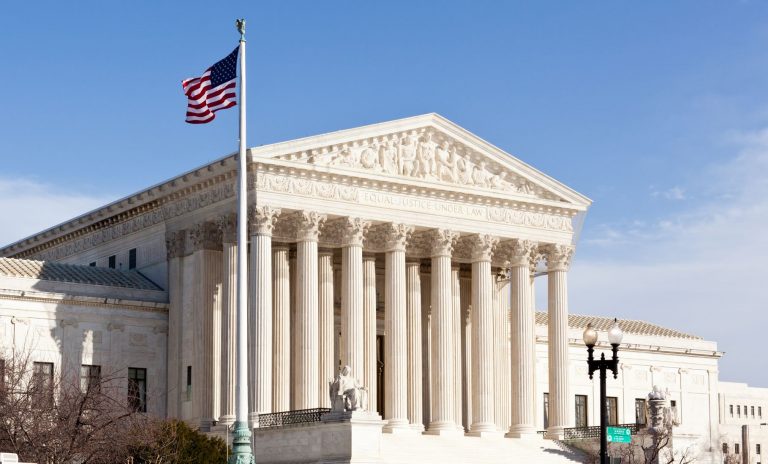Biden Expected to Approve American Rescue Plan Act Within Next 72 Hours
Biden Expected to Approve American Rescue Plan Act Within Next 72 Hours
Update: On March 11, 2021, President Biden signed the bill into law, extending FFCRA’s payroll tax credit provisions for employers who choose to offer such leave through September 30, 2021, and expanding the qualifying reasons for FFCRA leave for employer who choose to offer it.
President Biden is expected to sign the American Rescue Plan Act of 2021 (“ARPA”) by March 14, 2021. The new law was proposed in response to the coronavirus pandemic and is intended to be another stimulus bill aimed at the economic fallout from the coronavirus.
The Family First COVID-19 Response Act (“FFCRA”), first effective April 2, 2020, provided employees two weeks of paid sick leave and temporarily expanded the Family and Medical Leave Act (“FMLA”) under certain circumstances if they were affected by the COVID-19 pandemic. Under the FFCRA, small and midsize employers received refundable tax credits that reimbursed them, dollar-for-dollar, for the cost of providing this paid sick and family leave to their employees. The requirement for paid sick leave under the FFCRA expired on December 31, 2020, though many employers have voluntarily chosen to continue to provide such leave in 2021. The ARPA codifies the tax credits for such leave and extends them to September 30, 2021.
Paid Sick Leave under the FFCRA
The FFCRA required employers to provide up to two weeks (10 days) of paid sick leave if the employee was: (1) diagnosed with COVID-19; (2) told by an official to stay home because of exposure or symptoms; (3) experiencing symptoms and awaiting test results; (4) caring for an individual who was affected by the coronavirus; or (5) caring for a child whose school or child care provider was unavailable due to COVID-19 precautions.
An employee eligible under (1), (2), or (3) received paid leave calculated by their regular rate of pay for the number of hours they were normally scheduled to work. The law provided a cap of $511.00 per day and $5,110.00 in the aggregate. An eligible employee under (4) or (5) received up to two-thirds of their regular pay with a cap at $200.00 per day and $2,000.00 in the aggregate.
FMLA “Plus” Leave under the FFCRA
The FFCRA also temporarily expanded FMLA, providing employees with the right to take up to 12 weeks of job-protected leave under the FMLA if they had to care for a child due to coronavirus-related school and childcare closures. After the first two weeks (which the FFCRA did not require to be paid), employees taking leave were entitled to be paid at a rate of no less than two-thirds of the employee’s usual rate of pay for the remaining ten weeks, with a cap at $200 per day and $10,000 in the aggregate.
ARPA To Encourage Continued Paid Sick and Family Leave
The new act (which should be effective March 31, 2021, if approved by the president), will change the way an employer calculates its tax credits, including increasing the amount of wages used to calculate the credit, increasing the number of sick days an employer can use to calculate the credit, and including a new category of leave.
First, the ARPA allows an employer to take a credit against applicable employment taxes for each calendar quarter in an amount equal to 100% of the “qualified sick leave wages” paid (either the paid sick leave or the extended FMLA) or by the employer, with certain limitations.
Second, the qualified sick leave wages will now include not only the paid sick leave and extended FMLA leave as defined in the FFCRA, but also a new category under the paid sick leave — leave for time off to get COVID vaccinations. If an employee is obtaining immunization related to COVID-19 or recovering from illness related to such immunization, the employer could give the employee the option to take paid sick leave. This new option would be added under category “(3).”
Third, with respect to any individual employee, the ARPA limits the amount of paid sick leave that can be considered for the tax credit to the maximum of (a) 10 days and (b) the same aggregate cap (either $511 or $200) for any calendar quarter. With respect to any individual employee, the new act limits the amount of extended FMLA that can be considered for the tax credit to $200 for any day and increased the aggregate for all calendar quarters to $12,000.
Fourth, the credit for any calendar quarter cannot exceed the applicable employment taxes for the qualified wages paid with respect to the employment of all employees of the employer for that same calendar quarter. If it does, the excess shall be treated as an overpayment that must be refunded.
Fifth, the act does not allow “double dipping.” For example, if an employer is allowed to get a tax credit under the CARES Act (another COVID-19 stimulus package) then the credit under ARPA will be reduced accordingly. Likewise, this credit does not apply to qualified sick leave wages paid by an employer under a covered loan of the Small Business Act (Paycheck Protection Program), a grant under the Economic Aid to Hard-Hit Small Businesses, Non-Profits, and Venues Act, or a restaurant revitalization grant under the ARPA.
Sixth, the ARPA excludes the U.S. Government and its agencies from receiving a tax credit unless they are an organization described under 26 U.S.C. § 501(c)(1) and exempt from tax under § 501(a).
Seventh, the ARPA only applies to wages paid between April 1, 2021, and September 30, 2021.
What is the Bottom Line for Employers?
First, employers need to determine whether or not to voluntarily provide leave for employees getting the COVID-19 vaccine. Second, employers need to determine whether or not they are eligible for the continued tax credits for providing FFCRA leave.
The Employment Team at Rumberger Kirk will continue to monitor all legislation and federal laws and agencies and keep our clients updated so they can make correct decisions.










